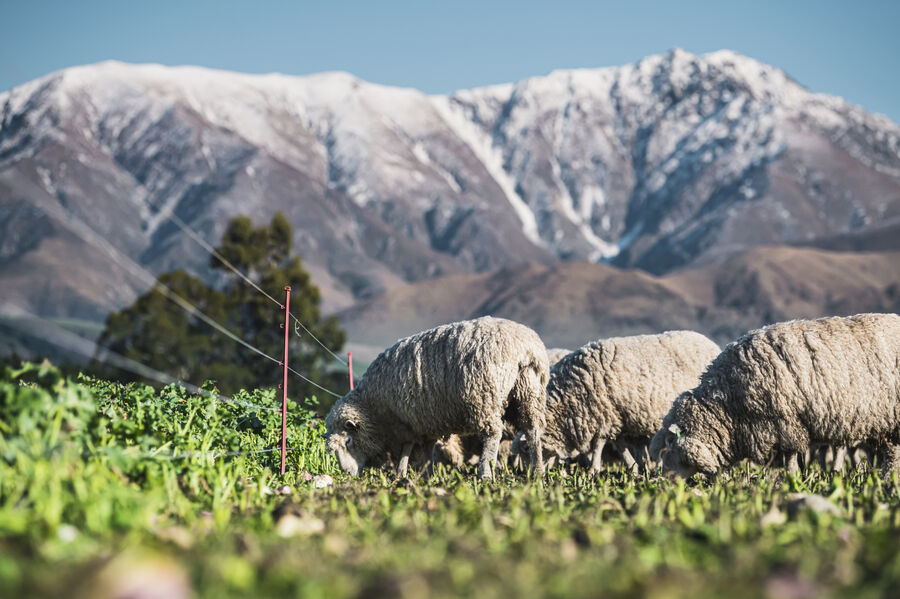
Choosing the right brassica isn’t about chasing the newest name - it’s about matching the crop to your farm system, stock class, and seasonal feed gaps.
Whether you’re planning for wintering, summer feed, youngstock performance, or multi-graze flexibility, variety choice will determine how much dry matter you grow, how well it holds, and how cleanly it grazes.
Below is a paddock-ready breakdown of the top kale, leafy turnips, rape, turnips and swedes for the coming season - including yield expectations, grazing suitability and where each variety fits best.
Kale Varieties
Coleor Kale
Rock-solid, reliable and bred to handle tough winters. Coleor offers excellent establishment, strong disease tolerance, and stands up well under snow loading. A dependable option for farms exposed to harsher weather.
Corsa Kale
A high-yielding giant kale with strong stems and an impressive leaf-to-stem ratio. Capable of producing up to 17,000 kg DM/ha, making it a standout for dairy and R2 cattle systems needing maximum dry matter.
Kea Kale
A new option from Cropmark that sits in the intermediate height range. Kea has shown real promise in summer and autumn multigraze systems, offering flexibility and consistent regrowth.
Kestrel Kale
Short stature, soft stems, and high energy. Kestrel is bred for superior stock performance and top utilisation, especially for sheep, deer, and youngstock. Easy grazing and strong feed quality make it a farmer favourite.
SovGold Kale
A consistent intermediate kale with high yield potential and a big stem-to-leaf ratio. Very late flowering helps hold feed quality later into the season - a key advantage when winter runs long.
Regal Kale
A proven option from PGG Wrightson Seeds. Intermediate in height, reliable across conditions, and suitable for all stock classes. Offers strong late-winter leaf retention.
MD Kale
A balanced variety offering both yield and quality. Treated for superior establishment, making it a good fit where early vigour is essential.
Leafy Turnips
Hunter Turnip
Fast to establish and bred for superior strike rates. Ideal for summer grazing or as a quick feed option in rotational systems requiring reliable regrowth.
Pacer Turnip
Flexible, consistent, and well known for high-quality forage. Pacer is less prone to bolting, making it a secure choice when sowing windows are tight or weather is unpredictable.
Pasja II Brassica
A hybrid combining rape and turnip benefits. Excellent regrowth and capable of being grazed in as little as 45 days. Ideal for multiple cycles through summer and autumn.
Rape Varieties
Pillar Rape
Versatile and productive, with good regrowth. Works across a variety of grazing systems and offers strong reliability through the season.
Greenland Rape
A late-flowering option with 70–80 day maturity, helping maintain feed quality for longer. Great for farmers needing flexibility in timing.
Mainstar Rape
Early maturing, strong aphid tolerance, and well-suited to companion mixes such as plantain and clovers. Good multigraze potential and a solid modern performer.
Spitfire Rape
High-yielding with a 90-day maturity. Performs very well in multi-graze systems, offering good utilisation and regrowth.
Vixen Rape
Early maturing (around 75 days) with a high leaf-to-stem ratio. Consistent performance and quality forage, ideal when earlier grazing is required.
Rifleman Rape
A recent Cropmark release - NZ-bred, adaptable, and capable of 2–3 grazings from a late-spring or early-autumn planting. Strong fit for flexible systems needing dependable regrowth.
Turnips
Appin Turnip
A rapid, high-yielding summer feed. Ideal for covering shortfalls or bridging tight summer periods.
Barkant Turnip
A very high-yielding, early-maturing option. Capable of growing up to 15 T/ha in 60–90 days. High ME and excellent for building a large bulk of summer feed quickly.
Green Globe Turnip
Highly adaptable - suitable for summer, autumn, or winter grazing. Offers consistent yields across diverse conditions.
Marco Turnip
A tetraploid variety delivering nutrient-dense feed for cattle and sheep. Great for supporting growth in youngstock or boosting performance in tight feed periods.
Rival Turnip
A fast-maturing summer turnip bred with improved mosaic virus tolerance. Good insurance in high-pressure regions.
Swedes
Clutha Gold Swede
A late-maturing staple. Tolerant to clubroot, dry rot and powdery mildew. Yellow-fleshed bulbs with yield potential up to 18 T/ha. A reliable performer for deep winter feeding.
Earnslaw Swede
A new early-maturity release from PGG Wrightson. Soft bulbs and strong tolerance to dry rot and Alternaria. Suitable for all classes - including youngstock.
Massie Swede
A new-generation early variety from Agricom. Palatable yellow flesh and a good fit for early winter grazing. Suitable across stock classes.
Saddleback Swede
A Cropmark release bred in New Zealand. Produces a strong leaf canopy and high-yielding, consistent bulbs. A low DM type.
Triumph Swede
High-yielding, yellow-fleshed, and reliable through winter. Maintains strong leaf retention and offers excellent dry rot tolerance.
All swede varieties are available for both conventional and precision sowing.
Which Brassica Should You Choose?
Every paddock, stock class, and system is different. The best choice comes down to:
- Feed gap (summer, autumn, winter)
- Stock class and utilisation
- Grazing frequency (single vs multi-graze)
- Yield targets and DM needs
- Sowing window and climate
If you want help choosing the right brassica for your farm, your local Catalyst agronomist can build a paddock-by-paddock plan to maximise yield, utilisation, and value this season.